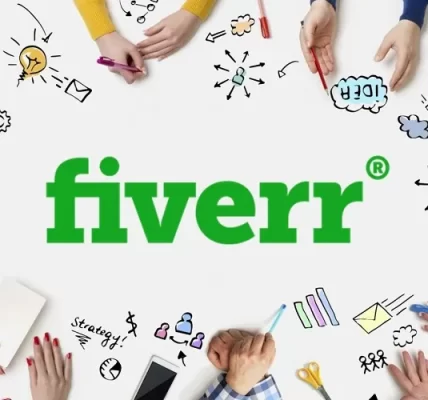
Turning your business idea into a reality is an exciting venture, but it requires careful planning and execution. Here’s a detailed guide to help you navigate the essential steps of starting a small business, ensuring you cover all critical aspects of the process.
1. Define Your Market Niche
To ensure your business idea has potential, you need to clearly understand where it fits in the market. Begin by conducting comprehensive market research. Identify who your target customers are, what their needs and preferences are, and how your business can meet those needs better than existing options. For example, if you’re opening a new coffee shop, research local coffee consumption trends, analyze competitor offerings, and identify any gaps in the market—perhaps a lack of specialty brews or organic options. Tools like surveys, focus groups, and industry reports can provide valuable insights. Assessing economic indicators and market saturation will help you gauge the feasibility of your business idea and refine your unique selling proposition to stand out in a competitive landscape.
2. Craft a Solid Business Plan
A robust business plan serves as a blueprint for your venture and is essential for attracting investors or securing loans. Your plan should be comprehensive and detailed:
- Executive Summary: Start with a compelling overview that highlights the core of your business idea. For instance, if you’re launching an eco-friendly fashion brand, summarize how your unique approach to sustainable materials will appeal to environmentally conscious consumers.
- Company Description: Provide an in-depth look at your business’s mission, vision, and structure. Include the founding story, the legal structure (LLC, corporation, etc.), and your long-term goals.
- Market Analysis: Offer detailed insights into your industry, including trends, target market demographics, and competitive analysis. Explain how you’ll position your business in the market.
- Organization and Management: Outline your team’s roles and responsibilities, including their expertise and how they contribute to the business’s success.
- Products or Services: Describe what you’re offering and how it benefits your target audience. For example, explain how your tech startup’s innovative software addresses specific pain points in project management.
- Marketing and Sales Strategy: Detail your strategies for attracting and retaining customers. This might include digital marketing tactics, sales funnels, and customer retention plans.
- Funding Request: If seeking funding, provide a clear explanation of how much capital you need, its intended use, and your current financial status.
- Financial Projections: Present detailed forecasts for income, cash flow, and profitability. Include a balance sheet and projections for at least three to five years to demonstrate the business’s potential for growth and sustainability.
3. Choose a Legal Structure
Selecting the appropriate legal structure for your business is crucial, as it affects liability, taxation, and regulatory requirements. Here’s a closer look at your options:
- Sole Proprietorship: This is the simplest form of business entity, ideal for solo entrepreneurs. It offers no separation between personal and business liabilities, meaning your personal assets are at risk if the business encounters financial trouble. For example, if you start a freelance graphic design business as a sole proprietor, your personal assets could be used to settle any debts or legal issues.
- Partnership: This structure is suitable for businesses with two or more owners who share profits, losses, and liabilities. It requires a partnership agreement to outline each partner’s roles and contributions. For example, a law firm started by two attorneys would typically be a partnership, sharing both the responsibilities and rewards.
- Limited Liability Company (LLC): An LLC combines the flexibility of a partnership with the liability protection of a corporation. It protects your personal assets while allowing flexible tax treatment. For instance, if you start a boutique consulting firm as an LLC, you’ll benefit from liability protection and potentially favorable tax options.
- Corporation: Corporations are separate legal entities that provide strong liability protection but come with more regulatory requirements and double taxation—once at the corporate level and again on dividends paid to shareholders. However, electing S Corp status can avoid double taxation. This structure is suitable for larger businesses with multiple investors, such as a technology company seeking significant venture capital funding.
4. Register Your Business
Once you’ve decided on your business structure, you need to complete the registration process to legally operate:
- State Registration: Choose your business’s home state and register your business name and entity type with the Secretary of State. For example, if you’re opening a bakery in California, you’ll need to register with the California Secretary of State and comply with state-specific requirements.
- Employer Identification Number (EIN): Apply for an EIN from the IRS, which is necessary for tax purposes and opening a business bank account. Sole proprietors without employees might not need an EIN, but it’s beneficial for separating personal and business finances.
- Bank Accounts: Open a business bank account to manage your finances separately from personal accounts. Consider applying for a business credit card to build credit and manage expenses effectively.
- Business Insurance: Invest in business insurance to protect against potential risks. A Business Owner’s Policy (BOP) often includes general liability, property insurance, and business interruption coverage. For example, if you run a retail store, business insurance can safeguard against damage or loss due to unforeseen events.
5. Secure Financing
Understanding your financing options is critical for covering startup costs. Explore various sources:
- Government Loans: The SBA offers several loan programs, such as microloans and 7(a) loans, to help new businesses get started. For example, an SBA microloan can provide up to $50,000 for equipment, supplies, or working capital.
- Personal Loans: Personal loans or credit cards might be an option if you have good credit, though this approach can mix personal and business finances. It’s essential to use this method cautiously and maintain a clear separation between personal and business expenses.
- Investors: Attracting investors can provide significant funding and business mentorship. Seek out angel investors, venture capitalists, or even friends and family who believe in your business idea. Present a compelling business plan and demonstrate potential for returns to secure their investment.
6. Recruit Your Team
Decide whether to hire employees or contractors based on your business needs:
- Employees vs. Contractors: Employees are integral to daily operations and require tax withholding and benefits, while contractors offer flexibility and independence. For example, if you’re opening a new café, hiring baristas and kitchen staff as employees will give you more control over their roles and training compared to freelance consultants who may handle specific projects.
- Setting Up Payroll: Implement a payroll system that manages tax withholdings, employee benefits, and compliance with federal and state regulations. Services like Gusto or ADP can help streamline this process. Ensure you have tax IDs, W-4 forms, and a clear payroll schedule in place.
- Recruitment: Use job boards, networking events, and professional social media platforms to find suitable candidates. Platforms like LinkedIn and Indeed can connect you with skilled professionals, while local job fairs and community organizations may help you tap into local talent.
7. Source Suppliers and Vendors
Identify and establish relationships with suppliers, manufacturers, and vendors essential to your business operations:
- Finding the Right Partners: Create a comprehensive list of everything you need, from raw materials to software services. Research potential suppliers and compare their offerings, prices, and reliability. For example, if you’re starting a clothing line, compare fabric suppliers based on quality, cost, and delivery times.
- Building Relationships: Develop strong relationships with reliable partners by attending industry trade shows, reading reviews, and seeking recommendations from other business owners. Establish clear agreements and maintain open communication to ensure a smooth supply chain.
8. Promote Your Business
Effective marketing is key to attracting and retaining customers:
- Website Development: Build a professional, user-friendly website to serve as your business’s digital headquarters. Ensure it’s optimized for search engines and provides essential information about your products or services. For instance, an online boutique should have an appealing design, easy navigation, and secure payment options.
- Social Media Marketing: Create profiles on relevant platforms where your target audience is active. Share engaging content, interact with followers, and run targeted ads. Platforms like Instagram and Facebook can be highly effective for businesses in creative industries.
- Email Marketing: Use email campaigns to nurture leads and maintain customer relationships. Offer exclusive deals, updates, and personalized content to keep your audience engaged. Services like Mailchimp or Constant Contact can help manage your campaigns effectively.
- Search Engine Optimization (SEO): Invest in SEO to improve your website’s visibility in search engine results. Create valuable content, optimize keywords, and build backlinks to enhance your online presence. Tools like Google Analytics can help track your SEO performance.
- Local Listings: Register your business in online directories to increase local visibility. Platforms like Google My Business and Yelp can help attract nearby customers and provide opportunities for customer reviews.
- Press Releases and Ads: Use press releases to announce major milestones and run ads to reach a broader audience quickly. Explore various advertising channels, including social media, search engines, and traditional media.
- In-Person Networking: Attend industry events, trade shows, and local business gatherings to connect with potential customers and partners. Building a personal network can be invaluable for promoting your brand and gaining local support.
By following these detailed steps, you’ll be well-prepared to launch your small business successfully and navigate the challenges of entrepreneurship.



